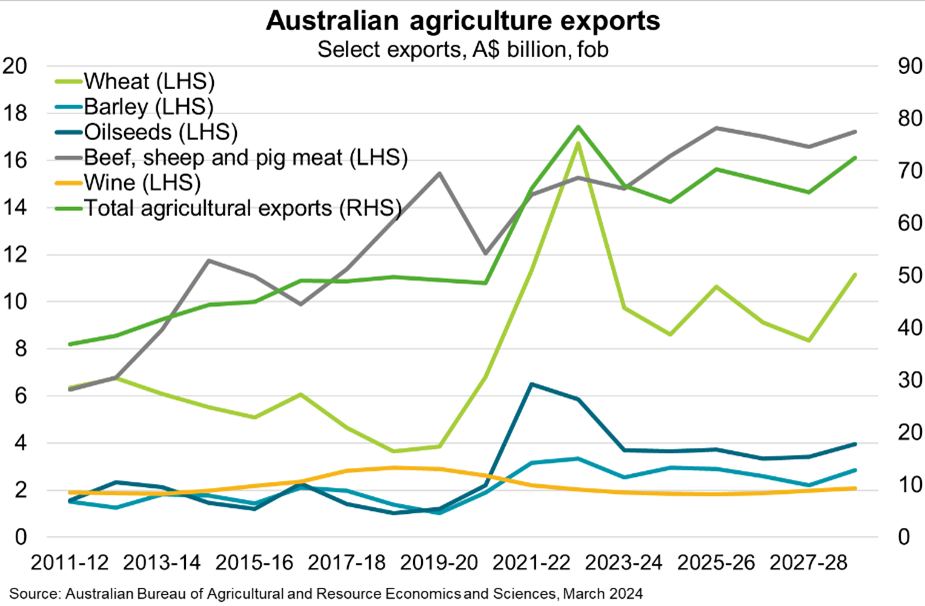Australia—Agriculture exports ease, but diversification mitigates risks
The Australian Bureau of Agricultural and Resource Economics and Sciences (ABARES) forecasts the value of agriculture exports to fall 5% to $64 billion in FY2025 following a 14% decline in FY2024. This comes after agriculture exports hit a record high in FY2023. Declining domestic crop production and softer international prices for most crop commodities, especially wheat, weigh on agriculture exports (Chart). Bucking the downtrend, drier weather boosts horticulture exports, particularly of fruit. Beef, sheep and pig meat exports are poised to continue their long term incline amid growing global demand from key markets in the US and Asia and declining supply from European and US producers.
Shipping presents challenges and opportunities for some agriculture exporters. Trade disruptions in the Red Sea are increasing shipping delivery times, especially for Australian canola destined for the European Union, and contributing to reduced availability and higher costs for fertiliser inputs. On the flip side, some Australian producers, of wheat for instance, may become more competitive against European production, which is normally shipped to Asia and East Africa via the Suez Canal.
Amid rising global risks, Australian agriculture producers are diversifying their export markets and enhancing their resilience to demand shocks. In FY2023, a record 23% of Australian agriculture exports went to ASEAN, worth $19 billion. Indeed, agriculture exports to ASEAN have exceeded those to China since FY2022. Robust economic growth and rising incomes across upper middle-income countries of Southeast Asia will likely continue to lift demand for high-quality, high-value and differentiated agriculture produce such as meat, seafood, and wine by wealthier citizens. Meanwhile, ASEAN’s growing role in the fibre supply chain and expansion in textiles manufacturing boosts demand for Australian cotton. Beyond the ASEAN region, recent trade agreements with India and the UK also create new diversification opportunities.

